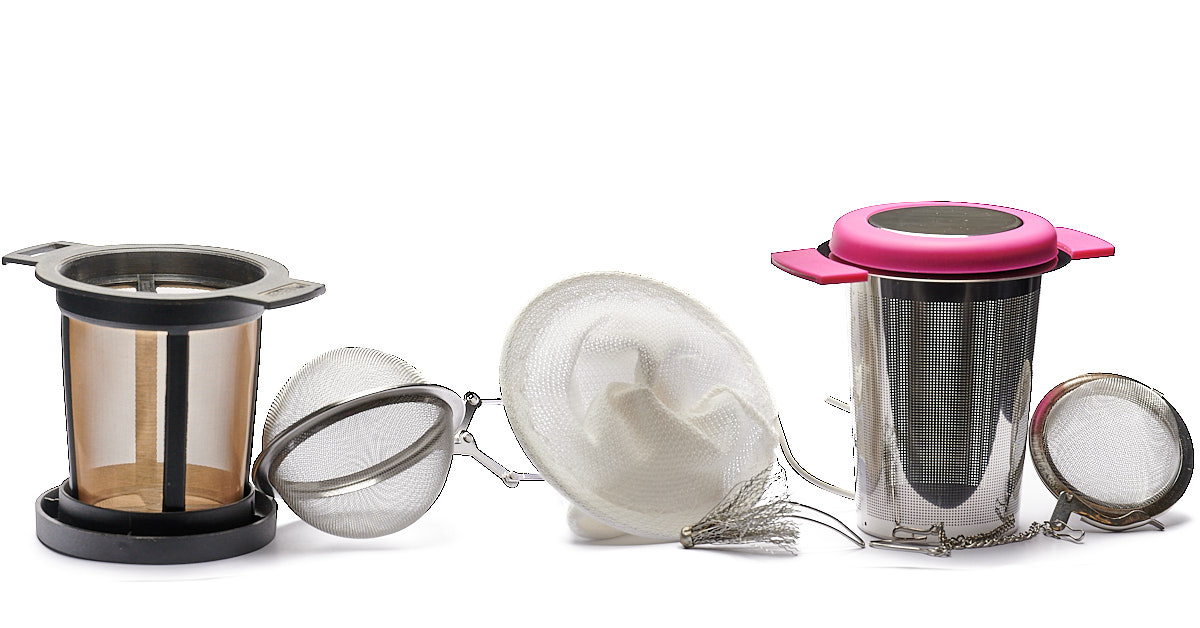
Tea bags come in all sorts of shapes and materials, but which one should you choose and which is the best? Here we look at some popular models and their advantages and disadvantages.
The classics - the original strainer
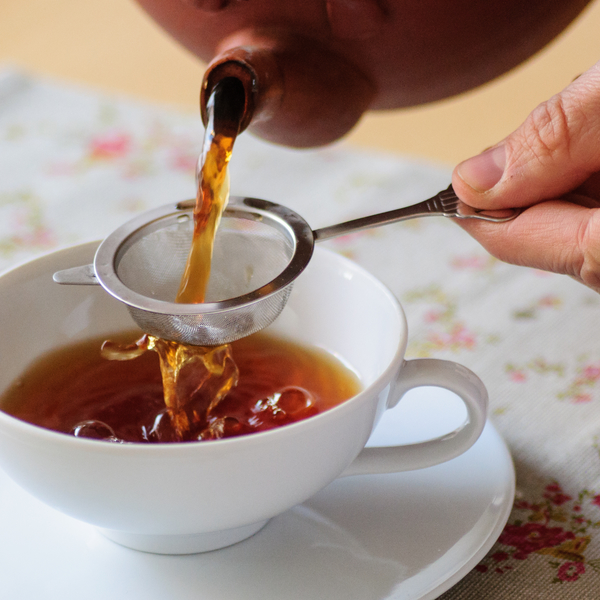

The classic tea strainer consists of a handle to hold and the strainer itself, a cup-shaped mesh. A common accessory, but often misunderstood. We have noticed that many people think that you put the tea leaves in the strainer and pour water through it into your cup. But that's not how it's meant to be used, because it produces a far too weak tea.
In fact, it is meant to be used after brewing. You brew your tea in a teapot, where the leaves are allowed to swirl freely. The tea strainer is used when serving. You pour the brewed tea through the strainer and into the cup to catch any leaves on the way. If you really want to show off, you strain the finished tea from a brewing pot into a preheated serving pot. Then the tea has finished steeping, the leaves are gone and it is ready to serve.
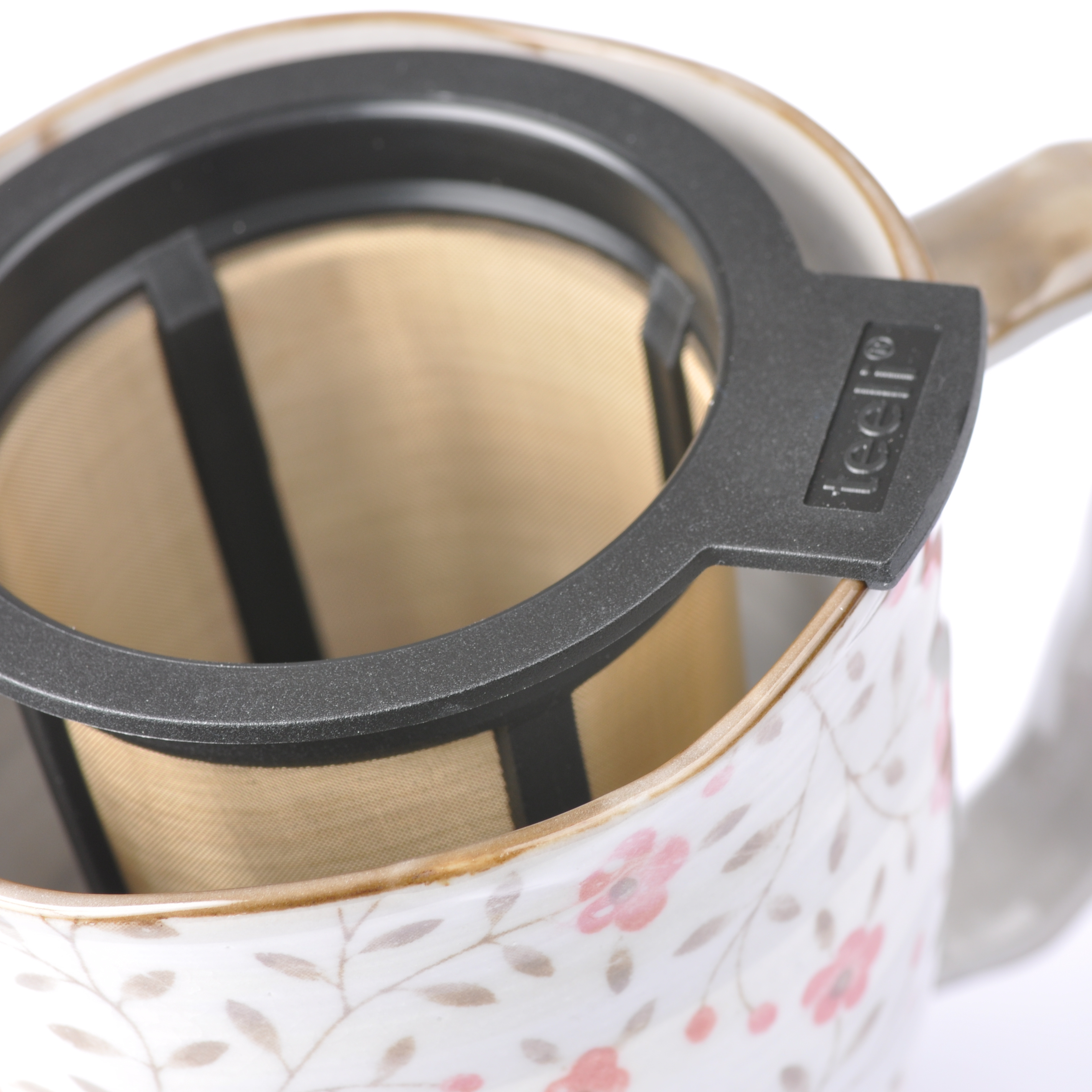

It has emerged as one of the most popular tea accessories. It allows you to brew one cup at a time. If you only need one cup to drink by yourself, it's the perfect accessory. Same thing if there are several people, but you want to drink different types of tea. Many models have a lid that can also serve as a saucer.
You put the amount of tea leaves you want, place the strainer/filter in the cup and pour in water. Put the lid on to keep the tea warm. When the brewing is finished, use the lid as a saucer. This way there is no spillage on the table and you don't have to take an extra saucer with you. Very practical. If you want to brew several batches of the same tea leaves, just put the strainer back in the cup and add more water.Some have a woven metal mesh, while others have a perforated metal sweep. There are also models with a nylon sweep.
Aside from the material itself, you may want to consider how tight the strainer is so that it doesn't leak leaves.When choosing a tea strainer for cup, there are a few things to consider. First of all, it must be large enough to allow the tea leaves to move. After all, the point of brewing tea is for the tea leaves to transfer their flavor to the water. If the strainer is too narrow and the tea leaves are squeezed together, you will hardly get any flavor out.It is also an advantage if it is easy to empty and clean. Some are machine washable, while others can only be washed by hand.
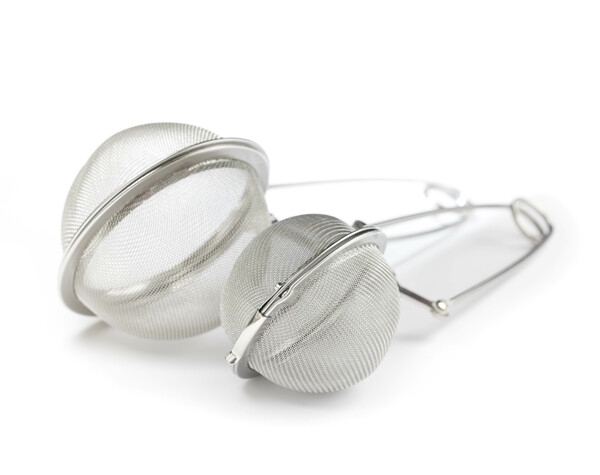

The tea clamp also known as tea tongs is also a popular tool, although it has lost popularity in recent years. A spring-loaded handle allows the clamp to be opened. It consists of two round halves of metal mesh. Its advantage is that it is simple, available in different sizes, and there are no loose parts. Some also have a small "lock", so that the strainer does not accidentally open and the leaves fall into the cup.If you choose a tea clamp, make sure it is large enough to ensure good contact between the tea and the water.
There are some very small tea tongs on the market. This may seem convenient, but it can be difficult to extract the flavor when the clamp is too small.The disadvantage of this design is that it is difficult to get it completely sealed. Also, the mesh is often relatively sparse, which means that fine-leaved or crumbly teas (or rooibos) leak through or get caught in the mesh. They also tend to become warped over time. A slightly unexpected use for these strainers is to sprinkle icing sugar or cocoa on baked goods. That's where they are really perfect!
Insert strainer in tea pot
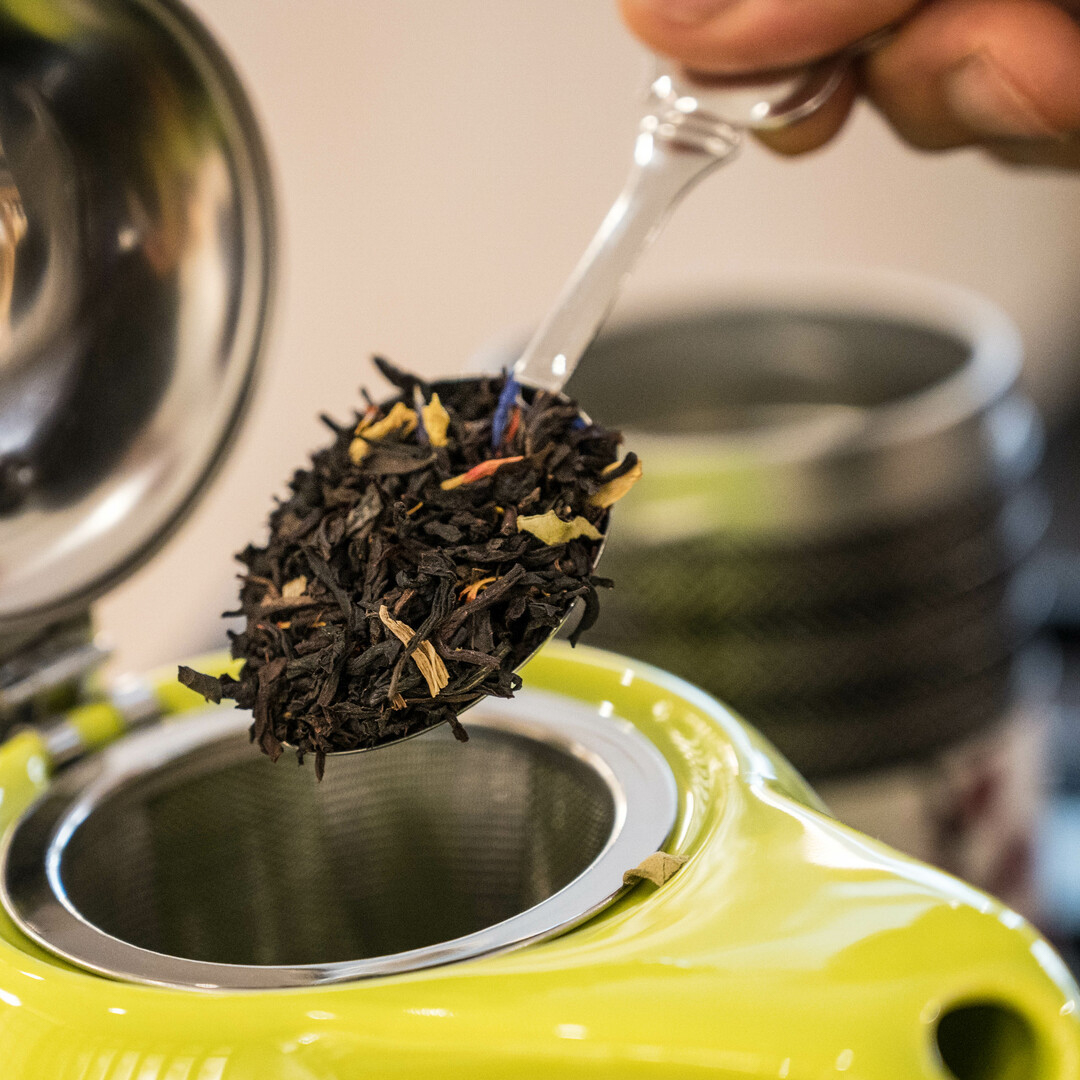

Many tea pots are sold with an insert strainer. It's the right size to fit directly into the jug, and hopefully the lid will fit as well. The material can be different depending on the jug, but common materials are stainless steel or glass. It is a convenient solution, not least because the jug always looks presentable, without the lid being on the wrong side.
The downside of these strainers is that it can be difficult to remove a hot - perhaps stainless steel - strainer from a pot without some sort of tool when the tea is done brewing. A fork or similar can be an improvised solution, but it may not look very fancy. Some insert strainers may also be too shallow for the pot in question. Here you have to weigh the pros and cons against each other.
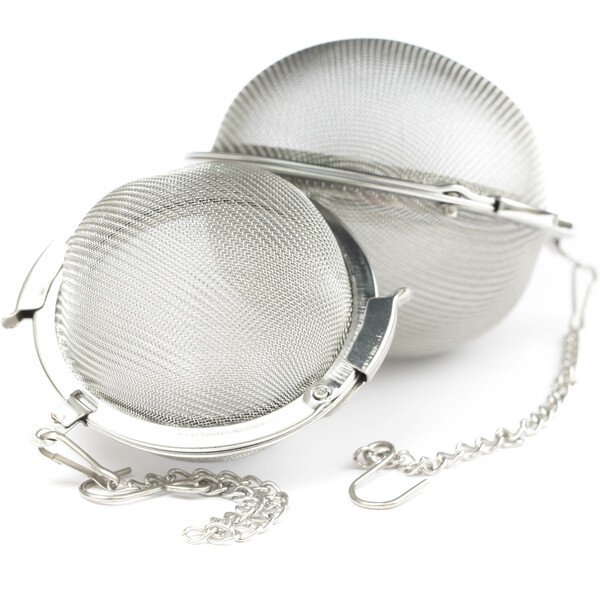

This is also a classic accessory. The chain is thin, and at the end there is usually a kind of hook to attach, for example, to the rim of the cup/pot or the handle of the pot. Compared to the tea clamp, the chain can usually slip past the lid so that it still fits. It also takes up less space than a clamp and does not protrude from the cup. Therefore, it can be a bit more discreet. The closure is not springy, but it is usually a kind of "lock" that closes the two halves, but there are also tea eggs with a bayonet closure, where you turn/screw the parts into each other. Here, too, the halves may not close tightly, and the mesh is somewhat sparse.
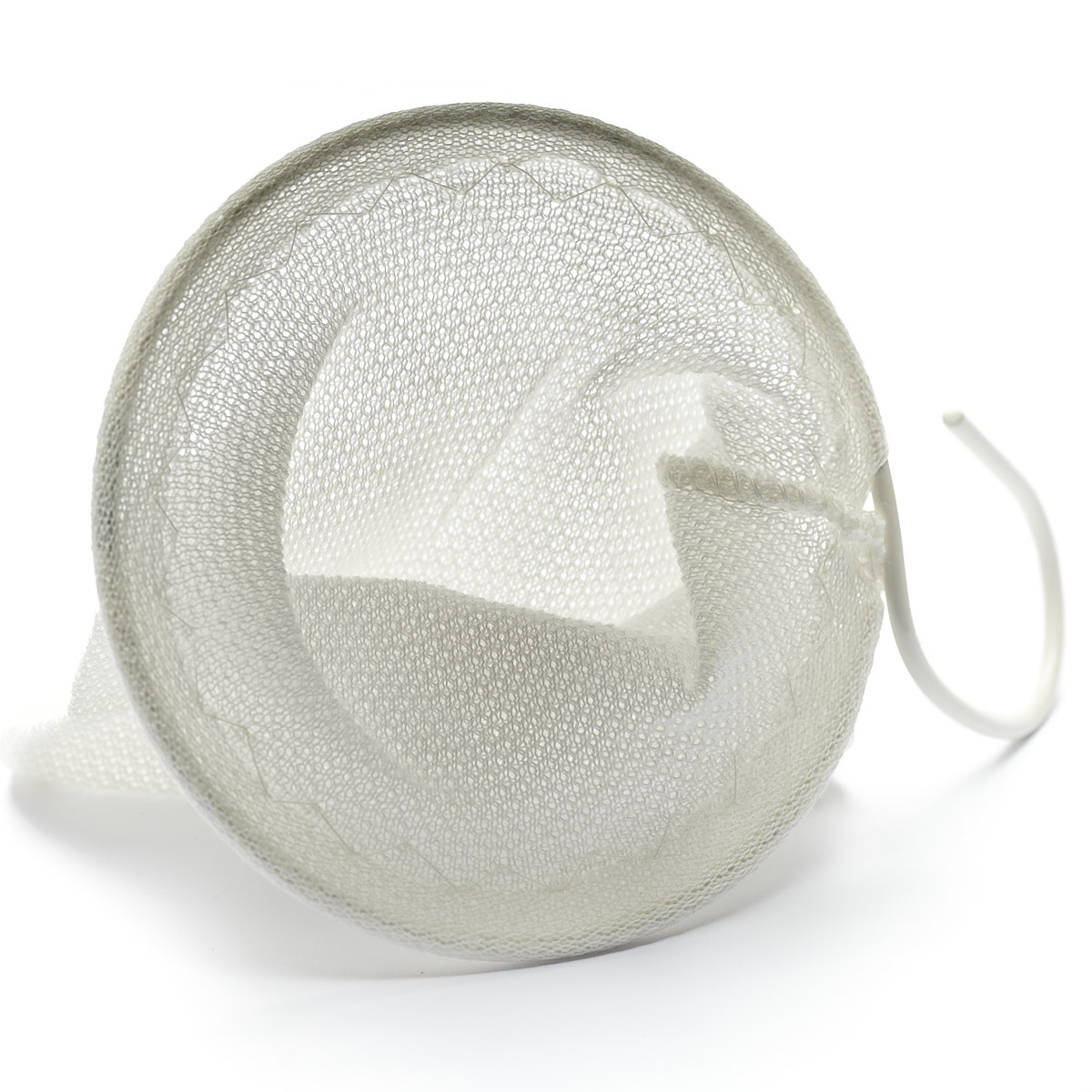

Tea sock used in a terracotta teapot - it's a classic combination from the 70s. With its wide opening, it is easy to fill. The tea sock is usually made of 100% cotton. The feel is solid and slightly retro. If it fits in your teapot, why not? Often it is the case that even a slightly tighter lid works well. Often comes with a sturdy hook that you can hang it up to dry when you have emptied it. The hook also serves as a handle during use.
Spout strainer - the tea broom
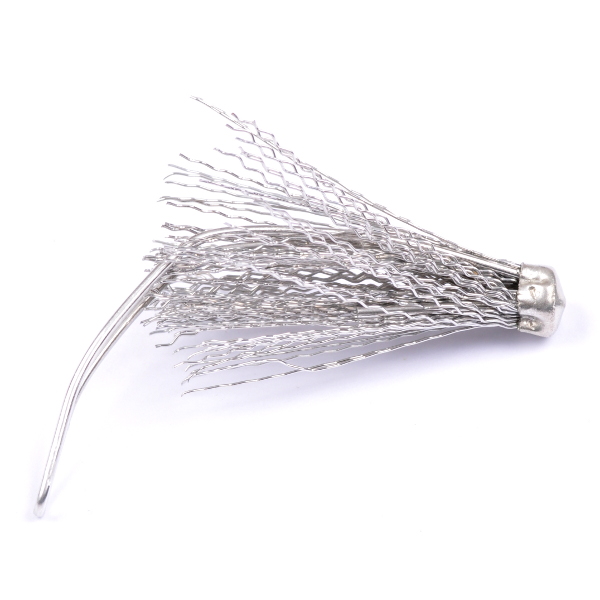

The spout strainer is a very special device. Also known as a "tea broom", it is inserted into the spout of the pot. When the tea has finished brewing, you strain directly through the spout of the teapot. Just like a classic tea strainer, the leaves move around in the pot. It also has some special advantages. Because it's sits in the tea pot, you don't have to position or move the strainer for each cup you serve, just pour. In addition, there is a small metal handle that is used to pull out the strainer after use. It also acts as a "drop stop", and when positioned correctly, it ensures that the tea pot does not drip. An ingenious little accessory, which supporters believe is the best solution to the strainer problem.
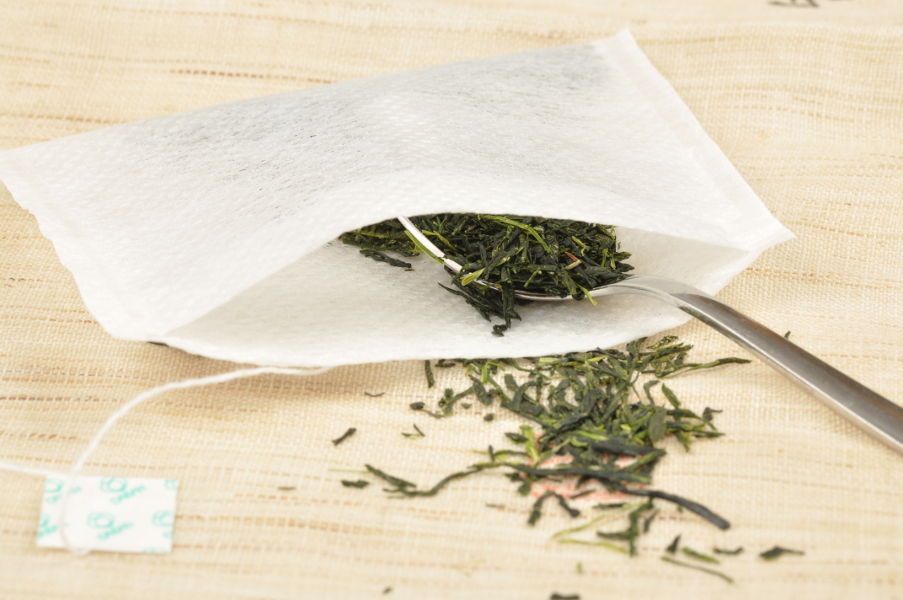

Not quite a strainer, but serves the same purpose. They are disposable bags that you fill with your loose tea in the dose you want. Perhaps not optimal from an environmental point of view, but sometimes it can be practical e.g. when traveling. Available in different sizes, with and without string;
